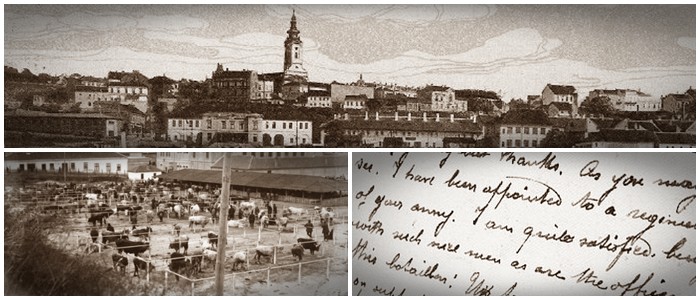
It was formed on the 11 February 1926 under the name Central Veterinary Bacteriological Institute. The decision to establish the Institute was made at the proposal of the Veterinary Department of the Ministry of Agriculture and Water and in agreement with the Ministry of Public Health, which prescribed the RULES for the Central Veterinary Bacteriological Institute (VT no. 1759). The rulebook prescribes the name of this institution, that it is a state institution under the direct supervision of the Ministry of Agriculture and Water with headquarters in Belgrade. According to this Rulebook, the Institute had the task of testing the validity of vaccines and diagnosing bacterial, viral and parasitic diseases of animals. In addition, the Institute’s experts went out into the field to identify and control livestock infections. In addition to their regular activities, the Institute’s experts were also involved in the education of livestock farmers and regularly gave lectures on livestock diseases on Radio Station Belgrade. The headquarters of the Institute was in the building of the Central Hygiene Institute in Belgrade, and after the completion of the construction of its own building, it moved to Zemun, where it remained until the beginning of World War II in 1941. years.
After the end of the April war in 1941. In 1945, the Institute moved to the building of the former production institute “Paster” on Banovo brdo in Belgrade, where it continued to work as the Veterinary Bacteriological Institute in Belgrade until 1945. when the Veterinary Bacteriological Institute of the National Republic of Serbia was formed from him.
After the end of the Second World War, the Veterinary Bacteriological Institute of the Republic of Serbia was organized on the initiative of the then Ministry of Agriculture of the Republic of Serbia and the acting head of the Veterinary Administration. In 1947 The Institute is moving to Voždovac – street Bulevar vojvode Stepe no. 295, where it was located until 1982. years. Since that year, the Institute has moved to two locations in Belgrade – Vojvode Toze 14 and Autoput 3 in New Belgrade. By Decree of the Government of the Republic of Serbia No. 5 of 14.1.1950. In 2010, the Institute grew into the Veterinary Scientific Research and Diagnostic Institute of the National Academy of Sciences. Next, in 1951. In 2010, the Center for Artificial Insemination was established at the Institute, as the first institution of its kind in SR Serbia, and it was located at the farm in Krnjaca.
In 1959 the Decree on the formation of the Veterinary Institute was passed, which, in addition to the existing Institute in Belgrade, also included the Veterinary Institute from Novi Sad and the Veterinary Institute from Priština. The uneven development of individual parts of the Institute in terms of equipment and staff structure resulted in its disbandment in 1961.
From the Belgrade part, the Institute for the Advancement of Veterinary Medicine of the Slovak Republic of Serbia is established. The subject of the Institute’s activities was scientific research in the field of veterinary medicine and the application of the results of scientific research in practice for the purpose of protecting the health of livestock, improving livestock production and indirectly protecting people’s health.
In order to make the work of veterinary specialist institutions as efficient and professional as possible, in the period 1970-71, the Institute and veterinary diagnostic stations from Svetozarevo, Kraljevo, Požarevac and Zaječar were integrated, and in 1985. with the OOUR for Physiology and Radiobiology of INEP and the Yugoslav Institute of Dairying from Belgrade, which formed the Institute and Institutes of Veterinary Medicine of Serbia.
During 1988-89. these institutes were separated and the Institute was named the Veterinary and Dairy Institute. Under this name, the Institute worked until 1993. when it grew into the Scientific Institute of Veterinary Medicine of Serbia. Today, the Scientific Institute of Veterinary Medicine of Serbia is one of the leading scientific and professional institutions in the field of veterinary medicine. It consists of the Institute for Health Care, located in Šumice, at Vojvode Toze Street 14, and the Institute for Food and Drug Control, located in New Belgrade (Highway 3).

